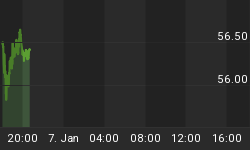Factors orders for June declined 1.5% just a bit better than the Bloomberg Consensus estimate of -1.8%, but May was revised lower from -1.0% to -1.2%.
Economists pretty much got this number correct, but don't give them much credit. They had a big clue from the advance durable goods report, down 4.0%.
Highlights
Anecdotal reports on the factory sector have shown isolated strength that actual government data have yet to show. Factory orders fell a sizable 1.5 percent in June following a downward revised 1.2 percent decline in May. Core capital goods (nondefense ex-aircraft) have been especially weak though orders did rise 0.4 percent in June. Shipments for this category, however, slipped 0.2 percent following a downward revised 0.7 percent decline in June in readings that will not boost revision estimates for second-quarter GDP.
Orders for nondurable goods were a plus in June, rising 1.0 percent but reflect price effects tied to energy products. Durable goods fell 3.9 percent in the month which is one 1 tenth lower than last week's advance report for this component. Orders for computers & electronics were especially weak in the month as were orders for transportation equipment with civilian aircraft, which is always volatile month to month but nevertheless has been weakening on trend, falling 59 percent. Vehicles are a plus in the report, with orders up 3.2 percent.
A major negative in the report is a 0.8 percent drop in total unfilled orders where contraction is a negative for factory employment. Total shipments are a positive, up 0.7 percent in a gain that may not be repeated should orders stay weak. A plus is that inventories edged lower, pulling down the inventory-to-shipment ratio to 1.35 from 1.36.
The factory sector, held down by weak exports and weak business investment centered in energy, has shown isolated signs of life but has yet to pull its weight so far this year.
Year-Over-Year Shipment Comparisons
- All manufacturing: -2.8%
- Excluding Transportation: -3.8%
- Excluding Defense: -3.0%
- Durable Goods: -0.5%
- Transportation: +2.3%
- Nondurable Goods: -5.1%
Transportation is a subcomponent of durable goods.
Within transportation, automobiles actually declined 7.0% with light trucks and utility vehicles up 7.1%. Heavy duty trucks fell 12.6%. Motor vehicle bodies, parts, and trailers rose 10.4%.
Year-Over-Year New Orders Comparisons
- All manufacturing: -2.6%
- Excluding Transportation: -3.6%
- Excluding Defense: -3.0%
- Durable Goods: +0.0%
- Transportation: +2.4%
- Nondurable Goods: -5.1%
The "isolated" signs of life are within the transportation sector.
Durable Goods New Orders

Core Capital Goods New Orders

Core Capital Goods Percent Change From Year Ago

Core capital goods are inputs into the nonresidential investment component of GDP.















